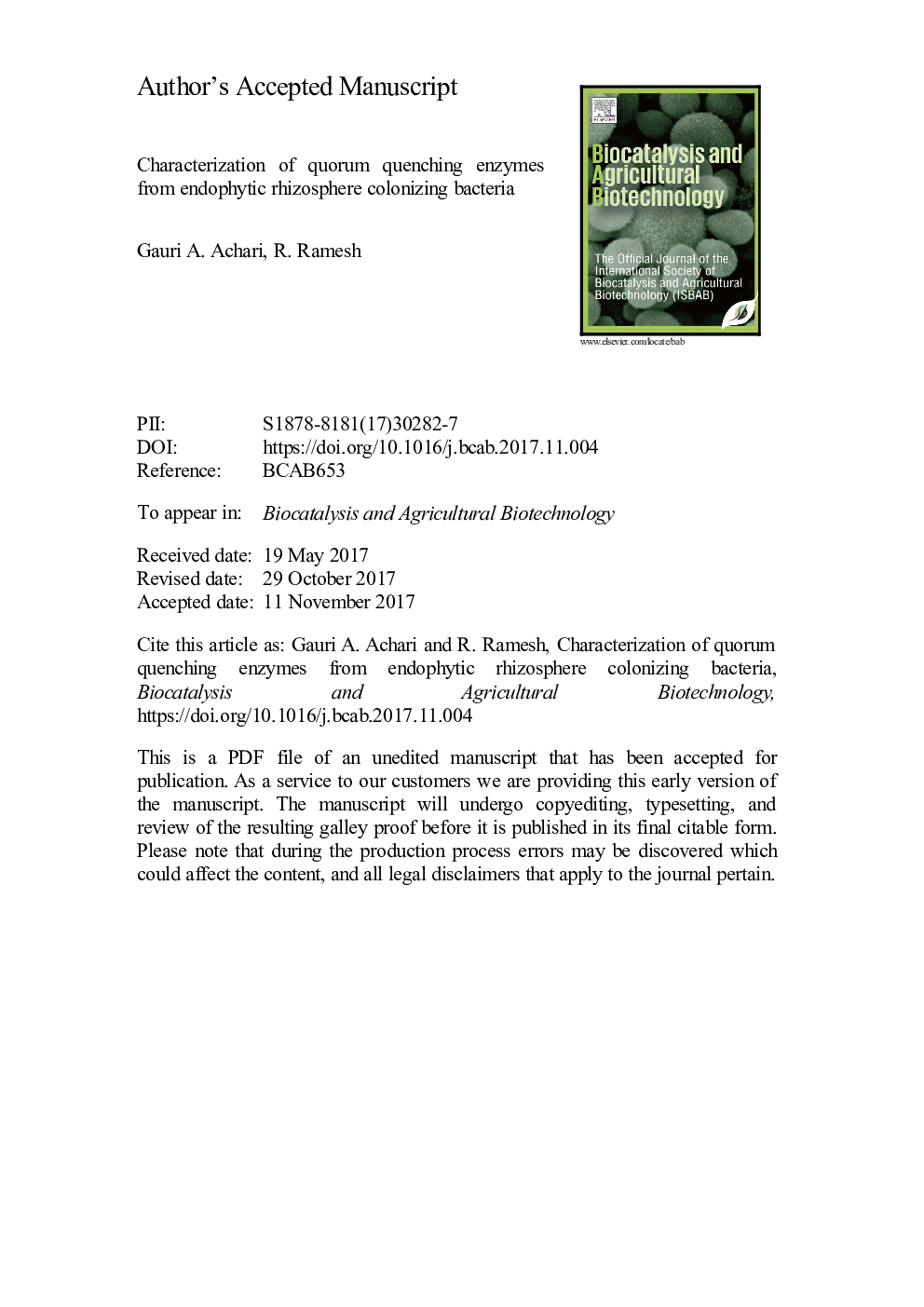| Article ID | Journal | Published Year | Pages | File Type |
|---|---|---|---|---|
| 8405911 | Biocatalysis and Agricultural Biotechnology | 2018 | 16 Pages |
Abstract
Bacterial wilt caused by Ralstonia solanacearum affects cultivation of solanaceaous vegetables throughout the world. Quorum quenching is recently emerging as a novel sustainable biocontrol option to curb bacterial diseases since it does not lead to resistance in the phytopathogen. In the present study, crude quorum quenching enzymes extracted from endophytic rhizosphere colonizing strains XB7 (Pseudomonas aeruginosa), XB122 (Pseudomonas aeruginosa) and XB102 (Stenotrophomonas maltophilia) were characterized. Vmax/Km ratios indicated that quorum quenching enzymes had higher activity towards p-Nitrophyenyl acetate as compared to p-Nitrophyenyl palmitate. Optimum temperature for the activity of quorum quenching esterase of XB7, and XB122 was 37 °C whereas esterase from XB102 had an optimum temperature of 28 °C. Optimum pH for the activity of quorum quenching enzymes of XB7 and XB122 was pH 6.8 whereas pH 8.0 was optimal for XB102. Cu2+ and Ca2+ enhanced activity of quorum quenching enzymes extracted from all strains. Activity staining following native PAGE indicated the molecular weight of esterase from XB7 and XB122 to be approximately 24 kDa whereas that of XB102 as 20.0 kDa. The study indicates that the extracellular quorum quenching esterases from XB7, XB122 and XB102 exhibit pH and temperature optima similar to common soil enzymes and can remain active in presence of metal ions which can occur in rhizosphere soil. These features of extracellular quorum quenching esterases from endophytic and rhizosphere colonizing strains led us to a conclusion that these enzymes may have potential applications in innovative and ecofriendly bacterial wilt management approaches.
Keywords
Related Topics
Life Sciences
Agricultural and Biological Sciences
Agricultural and Biological Sciences (General)
Authors
Gauri A. Achari, R. Ramesh,
